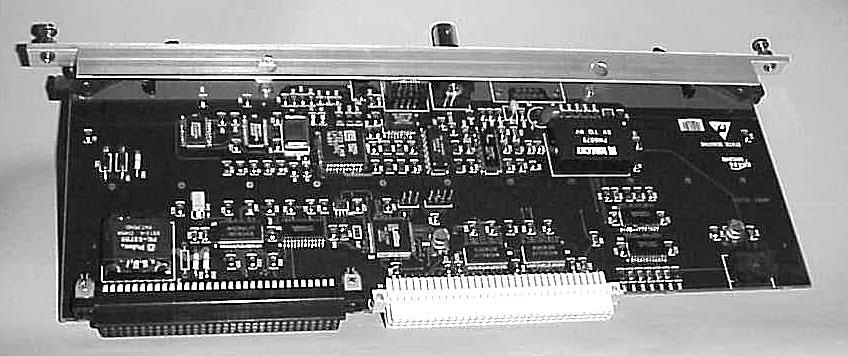
You are here: CSP Developer’s Guide: Common Channel Signaling > 3 SS7 over the EXNET Ring > SS7 Over the Ring and Single Server Node Communications
SS7 Over the Ring and Single Server Node Communications

Overview
The SS7 stack(s) resides on a single SS7 card in a non-redundant configuration or on a pair of SS7 cards in a redundant configuration. The card(s) is located in a single CSP node (the SS7 Server Node) that provides the common channel signaling for up to seven nodes in a CSP environment with SS7 Series 3 cards and up to four nodes with SS7 PQ cards.
• Multiple stacks on an SS7 card (or redundant pair) can exist in the SS7 Server Node. Each stack operates independently as a separate SP with its unique Originating Point Code (OPC).
• Voice circuits controlled by SS7 can originate or terminate on any of the seven nodes within the domain of a single SS7 Server Node. Voice traffic between the nodes in the CSP use the EXNET ring.
The SS7 card (or pair) communicates with the CSP Matrix Controller Series 3 cards in remote nodes via Ethernet, which is used for:
• Call control among CSP nodes
• Host connectivity
• SS7 call control for SS7 over the ring
CCS I/O Cards
The I/O cards handle the additional communications for SS7 hardware in SS7 over the ring. These I/O cards are a redundant card pair occupying two card slots in the CSP on the node and using an HDLC link between them for communication. The SS7 card requires the CCS I/O card. The SS7 Series 3 card requires the SS7 Series 3 I/O card.
Features:
• The I/O cards are single slot.
• Each I/O card supports a single 10 Base T or 10 Base 2 Ethernet connection (according to an auto-select function, which detects the active Ethernet connection).
• Each I/O card is paired with an SS7 card.
The CCS I/O card shown in CCS I/O card , is described fully in the CCS I/O HPD.

Separate HDLC buses are used in the following ways:
• Midplane HDLC bus for local communication (including matrix/SS7) within a node
• CCS I/O Redundancy Cable, an independent HDLC link, for redundancy between SS7 cards
SS7 Call Control at the matrix level (on the SS7 Server Node) communicates with the Matrix Controller on remote CSP nodes over the Ethernet via the CCS I/O card. The same physical network is used for host and matrix controller communications.
Redundant configurations are optional. If you choose to configure redundancy, removing one of a pair of CCS I/O cards in a Server Node will not interrupt SS7 system operation, nor will it require any user intervention.
Important! A redundant SS7 PQ card connects to the remote matrix controller cards through the Ethernet, and to the primary SS7 PQ card through the HDLC bus.
A CSP with SS7 capability can withstand the following failure conditions while maintaining stable calls:
• Matrix controller switchover in the SS7 Server Node: If a matrix controller card CSPs over in an SS7 Server Node, remote voice circuits are not affected, including calls that have been answered or are in the process of being answered. No remote calls are purged and incoming calls can continue to be processed and set up to remote nodes, ensuring that a voice circuit is formed.
• Matrix controller switchover in a node other than the SS7 Server Node
• A single SS7 card failure/removal in a redundant SS7 configuration
• A single CCS I/O card failure in a redundant SS7 configuration
• CSP ring failure with alternate paths available
Important! As a result of EXNET Ring failure, voice circuits either originating or terminating on nodes that are isolated from each SS7 Server Node will be affected.